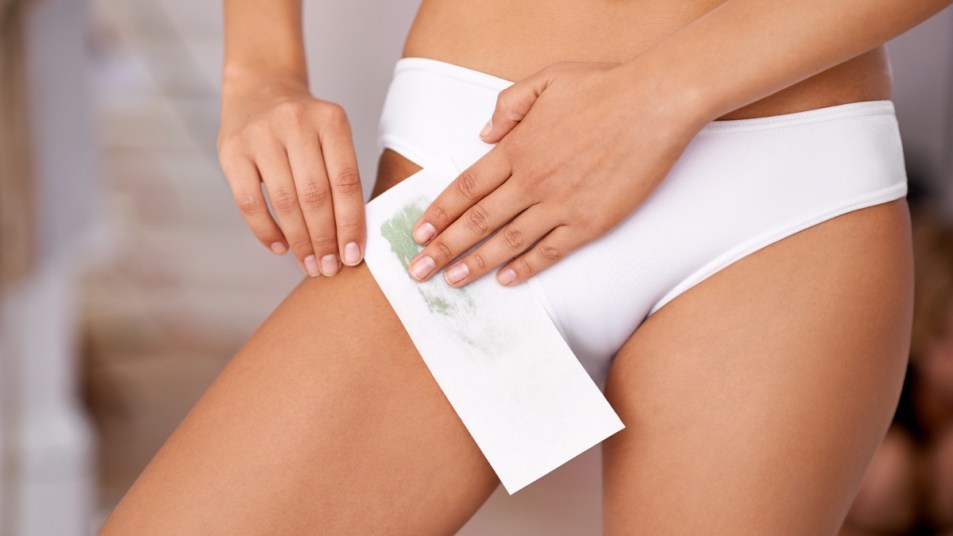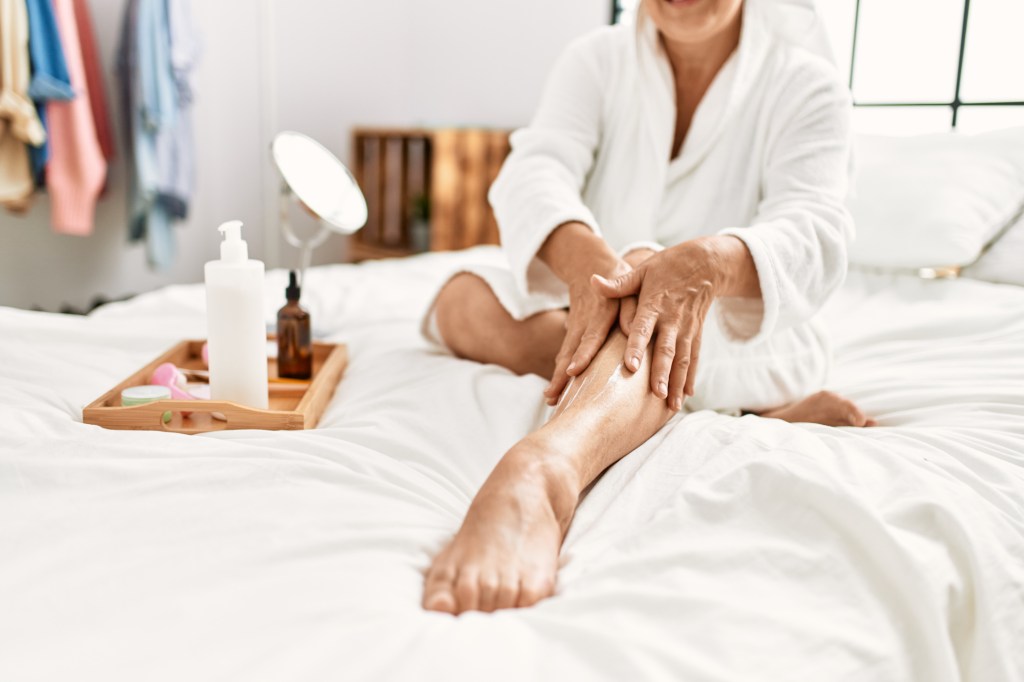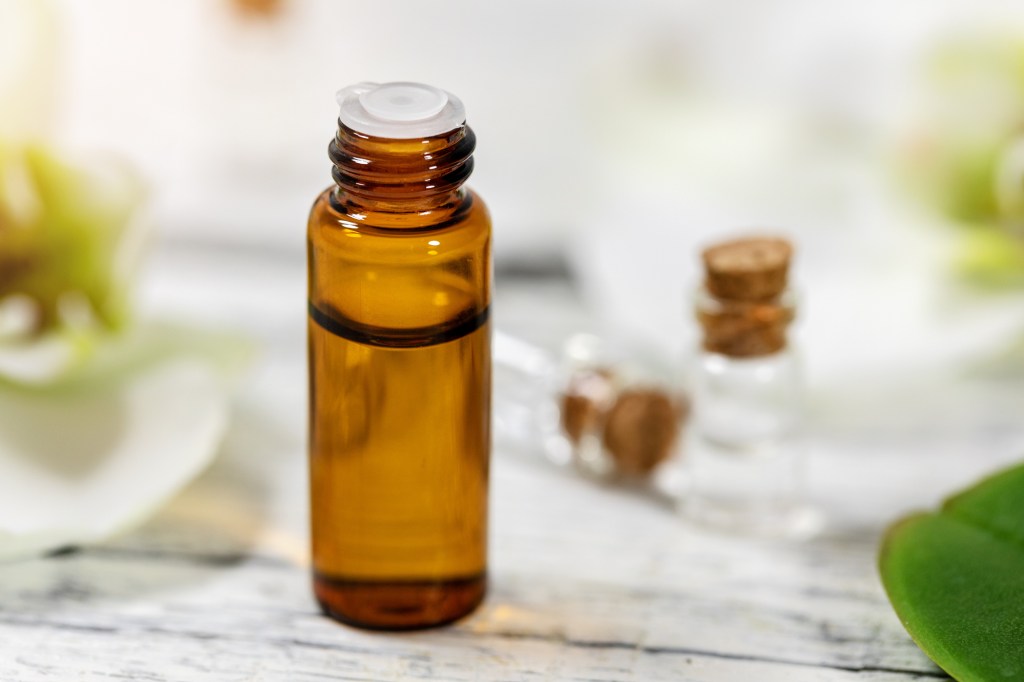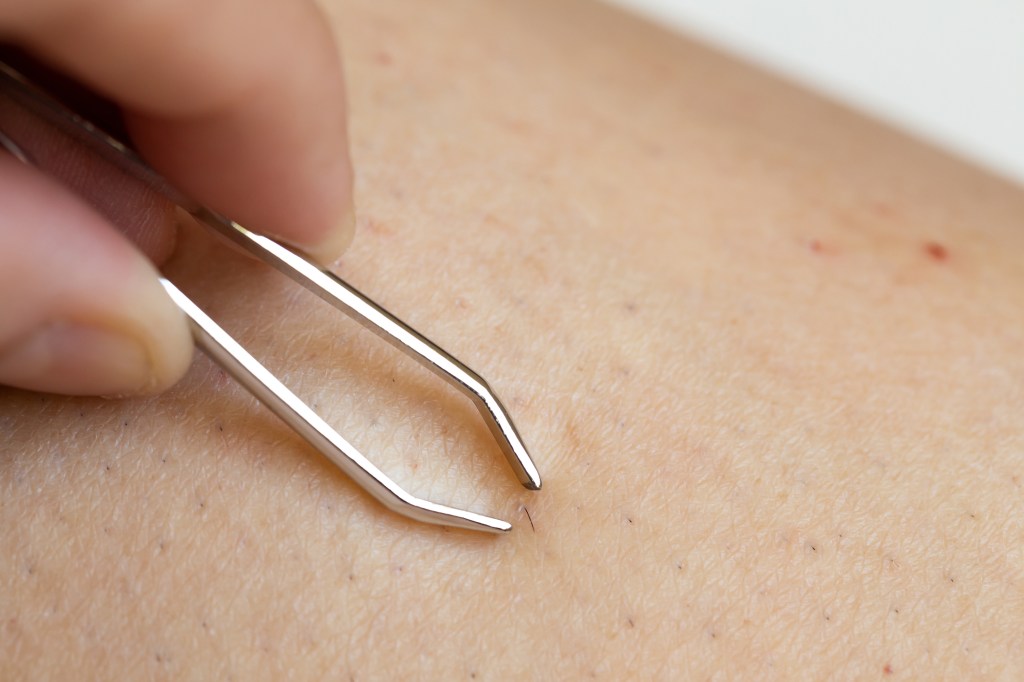This $5 Medicine Cabinet Staple Prevents Ingrown Hairs After Waxing
Plus, simple tricks to treating ingrowns you already have

Maybe you stopped shaving because it left you with razor burn, or your hairs just grew back too fast. So you turned to waxing thinking that, sure, it can be painful, but you do it once and don’t have to worry about regrowth for at least another month. You love the ease and the low maintenance expectations. But now you’re contending with pesky, irritating ingrown hairs after each wax. Unfortunately, they can pop up anywhere you wax including legs, armpits and bikini line, and they’re especially common for those with thick, coarse or curly hair. The good news? They’re avoidable! For expert-backed tips on how to prevent ingrown hairs after waxing, keep reading.
What are ingrown hairs?
In scientific terms, ingrown hairs are called pseudofolliculitis, which refers to the inflammation of the hair follicles, explains Mila Davis, aesthetician at Skin to Smile. “The inflammation occurs due to the hair being unable to break through the outer skin barrier so it grows back into the skin instead.”
It happens when hair that’s been removed (via plucking, threading, shaving or waxing) starts to grow back and curves into the skin. The skin then reacts as it would to any foreign body and becomes inflamed, causing small, swollen, pimple-like bumps (also known as razor bumps). While shaving is the most common cause of ingrown hairs because it cuts the hair off at the surface instead of pulling it out from the root, ingrown hairs can still happen with other hair removal methods like waxing.
People with curly hair are more prone to them to begin with because their hair follicle already has a curvature, making it more likely to curve back into the skin once removed. And if you have coarse, textured hair and you’re a woman, it doubles your chances of getting them. “Ingrown hairs are more common in women due to fluctuating hormones, which can affect hair growth, oil production and skin texture,” says Davis.
While legs, underarms and bikini line are all common spots for women to get ingrown hairs, the bikini line can be the most troublesome. “The hair around the pubic area is often thicker and the skin around that area is more delicate. Both combined can cause one to be more prone to ingrown hairs when it comes to hair removal,” says Stephanie Hack, MD an OBGYN and founder of Lady Parts Doctor.
How to prevent ingrown hairs after waxing
These easy tips work wonders:
1. Exfoliate regularly
Dr. Hack recommends gently exfoliating your skin two to three times weekly with a mild scrub or exfoliating cloth. “This helps remove dead skin cells that can trap hair follicles and lead to ingrown hairs,” she says. You can also DIY a grainy scrub that will slough off the dead skin cells and residue that can trap hairs under the skin’s surface so you can get a super-close, smooth shave or properly prep skin for waxing.
A scrub recipe we like:
Ingredients:
- ¼ cup coconut oil
- 1 cup granulated white sugar
- Juice of one lemon (can sub 20 drops lemon essential oil if desired)
- 1 Tbs. honey
- 20 drops tea tree oil
Instructions:
- Combine all ingredients in a small jar or bowl
- While in the shower, use on the area you plan to wax, rubbing it in, in circular motions to loosen the skin
- Rinse with warm water and pat skin dry
Use this scrub once daily for best results.
2. Moisturize, moisturize, moisturize

Another important tip when it comes to how to prevent ingrown hairs after waxing is to apply a hydrating, alcohol-free moisturizer to the area to keep it soft and supple. “Well-moisturized skin is less likely to develop ingrown hairs,” says Dr. Hack.
While any drugstore moisturizer will do the trick (or even just simple baby oil), some are specially formulated to hydrate skin and prevent ingrown hairs. This one from Sothy’s (Buy from Lovely Skin, $41.57) features plant and marine extracts that work together to slow the growth of hair and reduce the thickness of hair so that ingrowns are less likely to develop.
3. Use a product with salicylic acid
Salicylic acid is considered the gold standard in chemically preventing and treating ingrown hairs. Studies have shown it can effectively slough off the dead skin around the hair, helping to release it. A product like asap Clear Skin Bodygel (Buy from Lovely Skin, $56) can be used before and after waxing to remove the build up of dead skin cells that can contribute to ingrown hairs.
Another option: Whip up an aspirin paste. Aspirin’s salicylic acid exfoliates to remove the skin cells that trap in the hair follicles. Just mix two crushed aspirin tablets with 1 Tbs of water into a paste and apply to the area. Let sit for 10 minutes, then rinse.
4. Avoid wearing tight clothing
In the days following the wax, opt for loose-fitting clothing to prevent friction and irritation. “Tight clothing can rub against the skin and exacerbate ingrown hairs,” explains Dr. Hack.
How to treat the ingrown hairs you already have
If you’ve done your best to prevent the painful bumps and you’re still getting them, several products on the market and at-home hacks can be used to treat ingrown hairs. You’ll want to both calm the area and spot-treat the bumps.
While the most effective way to eliminate ingrown hairs after waxing is to apply a warm compress to try and release the hair, there are some other at-home methods that can help:
1. Enlist some Visine
One at-home remedy is to mix a drop of Visine eye drops (it narrows blood vessels to reduce redness) with a moisturizer and apply it to the area. Tea tree oil can also be used because of its natural anti-inflammatory, antibacterial and antiseptic properties.

2. Apply a black tea bag compresses
You can also steep some regular black tea bags and apply them to the area as a warm compress to soothe and heal the irritated and inflamed bumps.
3. Rub on some aloe vera ice cubes
Another instant-relief-hack to try is a cold compress like aloe vera ice cubes. Aloe is a natural anti-inflammatory that reduces redness and irritation while its antiseptic properties help stave off infection and speed healing time, explains dermatologist Debbie Palmer, M.D., author of Beyond Beauty. And when frozen, the chill constricts blood vessels to thwart redness further and numb any pain.
To do: Pour aloe vera gel into an ice cube tray and freeze. Once daily, as needed, rub an ice cube onto bumps for 1 minute. (Don’t rinse — letting the aloe absorb leads to a lasting skin-soothing effect.)
4. Try *this* cream
Doctors also say a simple 1% cortisone cream that you likely already have in your medicine cabinet is typically used to treat itching and inflammation and can also effectively treat inflamed inward hairs.
5. Opt for over-the-counter-help
If the natural remedies aren’t quite doing the trick, enlist the help of a product that targets stubborn in-growns, like Tend Skin (Buy from Amazon, $18.99) which can be applied immediately post-wax, or Venus Woman’s Daily Soothing Serum (Buy from Walmart, $9.97) which is specially formulated (and dermatologist and gynecologist tested!) for the sensitive bikini area.
Can I just pull out or pluck ingrown hairs after waxing?

In short, no. “Scarring is possible if an ingrown hair is not dealt with properly,” says Davis. You also risk getting infected in the area if you start digging into the skin, as that can introduce bacteria into the follicle.
For more skin-related secrets, click through these stories:
Are Flaxseed Masks the New Botox? Dermatologists Weigh In on the Viral Trend
The Bath Add-In That Makes Any Soak Instantly More Soothing — 4 Easy DIY Recipes
“I’m a Podiatrist and *This* Is the Drugstore Cream That Prevents Calluses”
The Secret to a Natural-Looking Sun-Kissed Glow All Year Long — No Sun Needed












